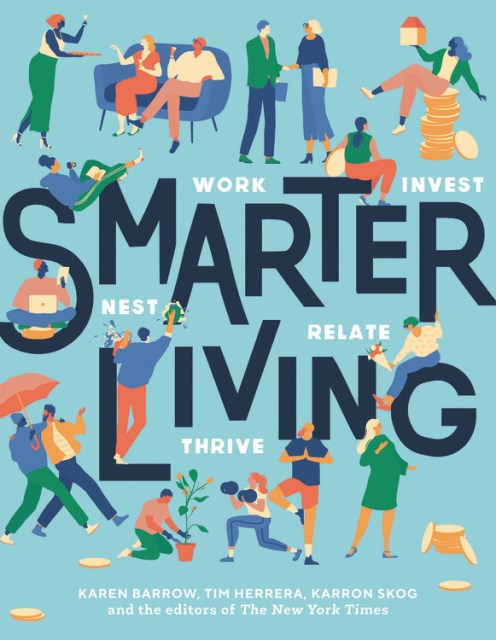Promotion
Use code MOM24 for 20% off site wide + free shipping over $45
Smarter Living
Work - Nest - Invest - Relate - Thrive
Contributors
By Karen Barrow
By Tim Herrera
By Karron Skog
By Reporters at The New York Times
Formats and Prices
Price
$27.99Price
$34.99 CADFormat
Format:
- Hardcover $27.99 $34.99 CAD
- ebook $14.99 $19.99 CAD
This item is a preorder. Your payment method will be charged immediately, and the product is expected to ship on or around December 3, 2019. This date is subject to change due to shipping delays beyond our control.
Also available from:
Smart, actionable advice and life tips on how to improve your career, your home, your finances, your relationships, and your health for a happier life — all from the popular Smarter Living section of the New York Times.
Launched in the summer of 2016, the New York Times Smarter Living section was created with the mission to help readers live better lives by publishing stories that have fallen between the news desks. Since then, the section has produced more than 250 pieces offering useful advice on a wide range of topics — including career and finance, love and relationships, health and wellness, and more — that have been read by more than 22 million unique readers. Smarter Living collects these very popular pieces into one handy guide, creating a trusted source that will appeal to those just starting out as well those looking for new approaches to life’s problems.
Launched in the summer of 2016, the New York Times Smarter Living section was created with the mission to help readers live better lives by publishing stories that have fallen between the news desks. Since then, the section has produced more than 250 pieces offering useful advice on a wide range of topics — including career and finance, love and relationships, health and wellness, and more — that have been read by more than 22 million unique readers. Smarter Living collects these very popular pieces into one handy guide, creating a trusted source that will appeal to those just starting out as well those looking for new approaches to life’s problems.
The book identifies 5 key areas for building a better life: Work, Nest, Invest, Relate, and Thrive. Each area contains advice curated from the column on topics such as the Art of the Out of Office Reply, the Annual Home Checklist, What to Do When You’re Bad at Money, How to Maintain Friendships, and How to Be Better About Stress. Each entry breaks down these sometimes overwhelming topics into manageable tasks through clear and concise guidance, easy-to-follow lists, and informative sidebars.
Thoughtfully designed with bright, four-color illustrations similar to those found in the section, Smarter Living will be a perennial reference on how to create a healthy and happy life.
Genre:
- On Sale
- Dec 3, 2019
- Page Count
- 224 pages
- Publisher
- Black Dog & Leventhal
- ISBN-13
- 9780762494125
Newsletter Signup
By clicking ‘Sign Up,’ I acknowledge that I have read and agree to Hachette Book Group’s Privacy Policy and Terms of Use








